How Russian Impressionism began
Soon after the rise of French Impressionism, which began in the 1860s, their style of impressionist painting was immediately copied by the Russians. However it was not until the late 1880s that Russian Impressionism paintings were seen in galleries.
The first artists to exhibit Russian Impressionism paintings were Valentin Serov, Isaac Levitan, Konstantin Korovin, Nicolai Fechin, and Ilya Repin. One of the first first official exhibitions of Russian Impressionism took place in Moscow, and was organized by the Moscow Society of Lovers of the Arts in December 1888. Valentin Serov won first prize for Girl with Peaches (1887), Korovin won second prize for genre painting with At the Tea Table (1888), and Isaac Levitan won second prize for landscape with At Volga. Evening Falls (1888). Russian Impressionism artists who painted in the late 1800’s and early 1900’s were well educated, well traveled, and highly influenced by the Impressionists from Europe.
The progression of Russian Impressionism
When most people think about Russian art, what comes to mind are the images of propaganda posters and the opulent splendor of Russia. However, Russian artists made a huge contribution to impressionist and realist art. Compared to Europe, impressionism had a complex development in Russia between 1860-1930. During this period artists combined many different styles – subsequently Russian impressionist and post-impressionist works often fall under other genres of art including Cezannism, Neo-Primitivism, and Russian Symbolism.
Russia’s contribution to the impressionist movement is showcased in the Museum of Russian Impressionism, displaying the original works of the top Russian Impressionism artists. The museums’ permanent collection consists of more than seventy works of art by prominent Russian artists such as Konstantin Korovin, Igor Grabar, Konstantin Yuon, Petr Konchalovsky, and Yuri Pimenov, as well as selected works by Boris Kustodiev and Valentin Serov. The painting below is by Tit Dvornikov, a naturally gifted and self-taught artist who went on to teach others.
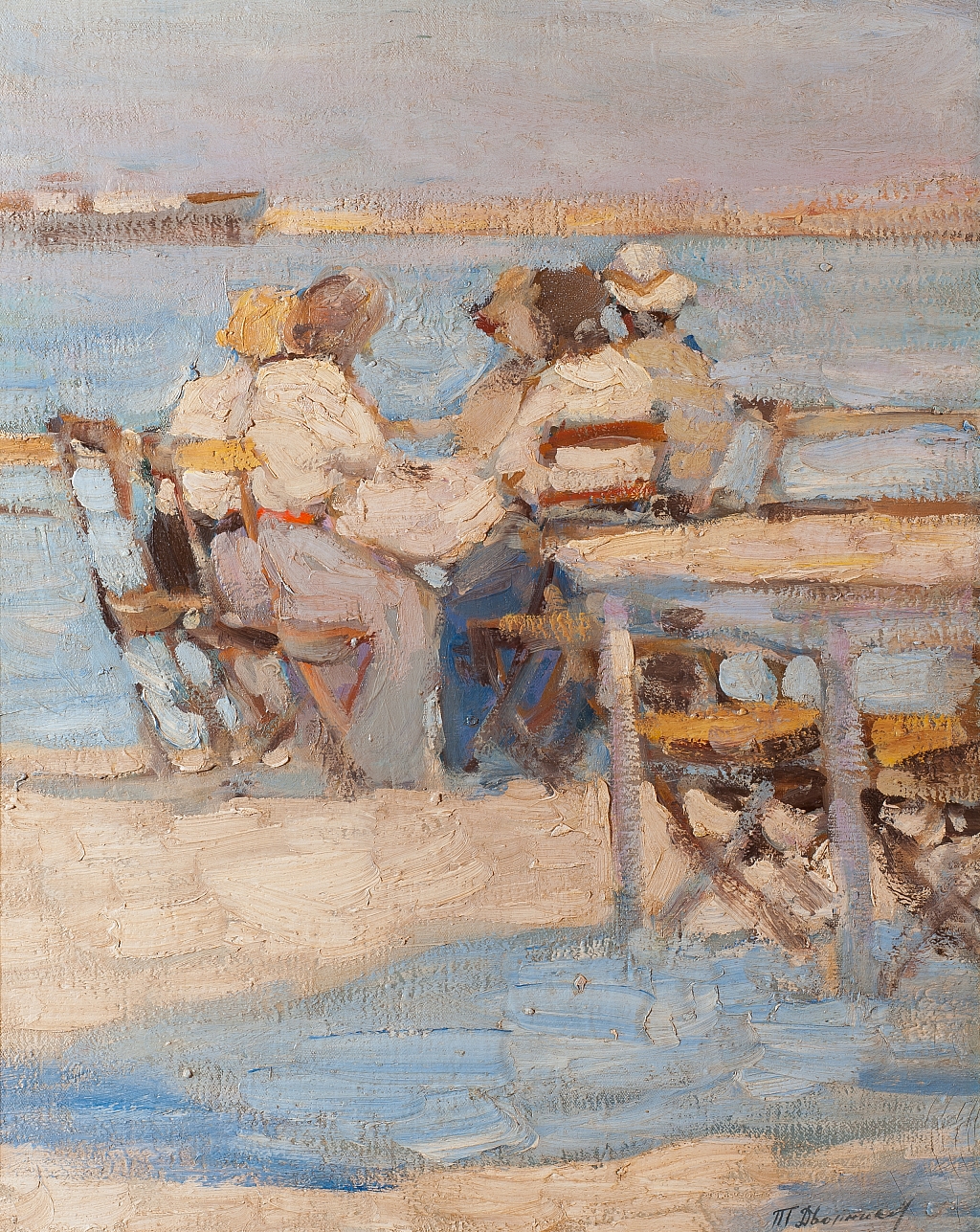
Impressionism was well represented in Russia. Artists in the 19th and early 20th centuries studied the impressionist art movements in Europe, and copied their motifs – to depict real life, nature, and light was an important form of expression in Russia.
Painting en plein air and a sketch-like style led artists to motifs that expressed the carefreeness of modern recreational activities in impressionistic interiors that are suffused with light, encouraging a shift away from the old subjects of Russian art. Studies of light effects in indoor scenes and in still lifes led to a new appreciation of these genres that were little seen at the academy in Moscow.
In portraits and pictures of families, Russian artists painted them more honestly and with more depth of feeling, to create their own style of Impressionism. The national identity was just as important as the relationship to the tradition of realism. Impressionism, with its focus on spontaneous expression and modernity, gave new ways of expressing this.
As such, Russian impressionist paintings have a distinctive feel and there is a sense of the Russian joyful and tragic culture and heritage that radiates from these paintings. The literal translation of impressionism in French is very different to the Russian translation, which is quite apparent when you compare the styles. The French interpret it as an impression of a time, mood, and light. The Russians translation means sorrow, which is why their paintings are more about emotion, family, and poetry.
Artists like Ilya Repin believed that the Russian people wanted artists to depict the real Russian life. Artists who did this successfully became famous, national treasures. Valentin Serov’s painting Girl with Peaches for instance was a sensation. Depicting Russian country life was important culturally and emotionally to the Russian psyche. Artists live Isaac Levitan did this wonderfully. The famous brothers Alexei and Sergei Tkachev have produced stunning works.
The most iconic early Russian Impressionists
Here are some of the more famous artists from the early era of Russian Impressionism.
Konstantin Korovin (1861 – 1939)
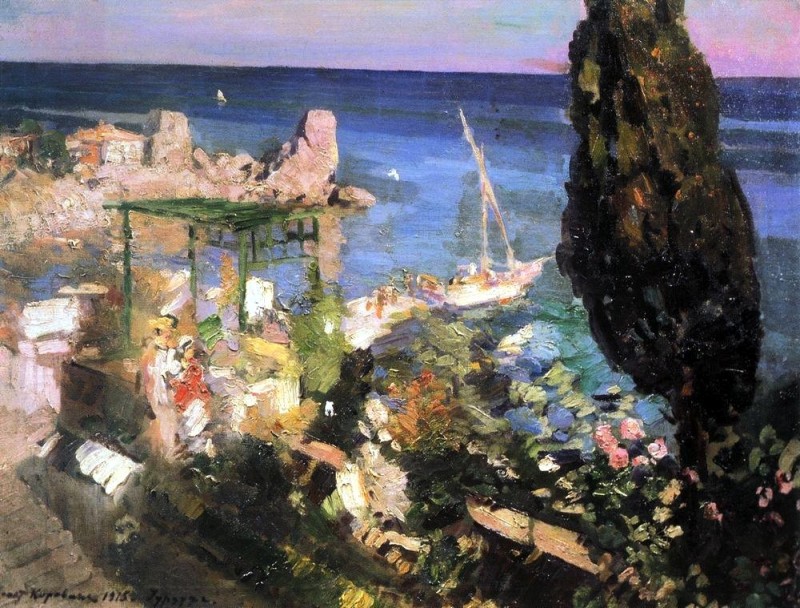
One of the most important Russian impressionists, Korovin was inspired during his time in Paris, where the genre was essentially born. The artist dedicated many paintings to the French capital: “Paris. Boulevard of the Capucines, ” “Paris. Morning,” and “Night Street. Paris” are among them.
Valentin Serov (1865 – 1911)
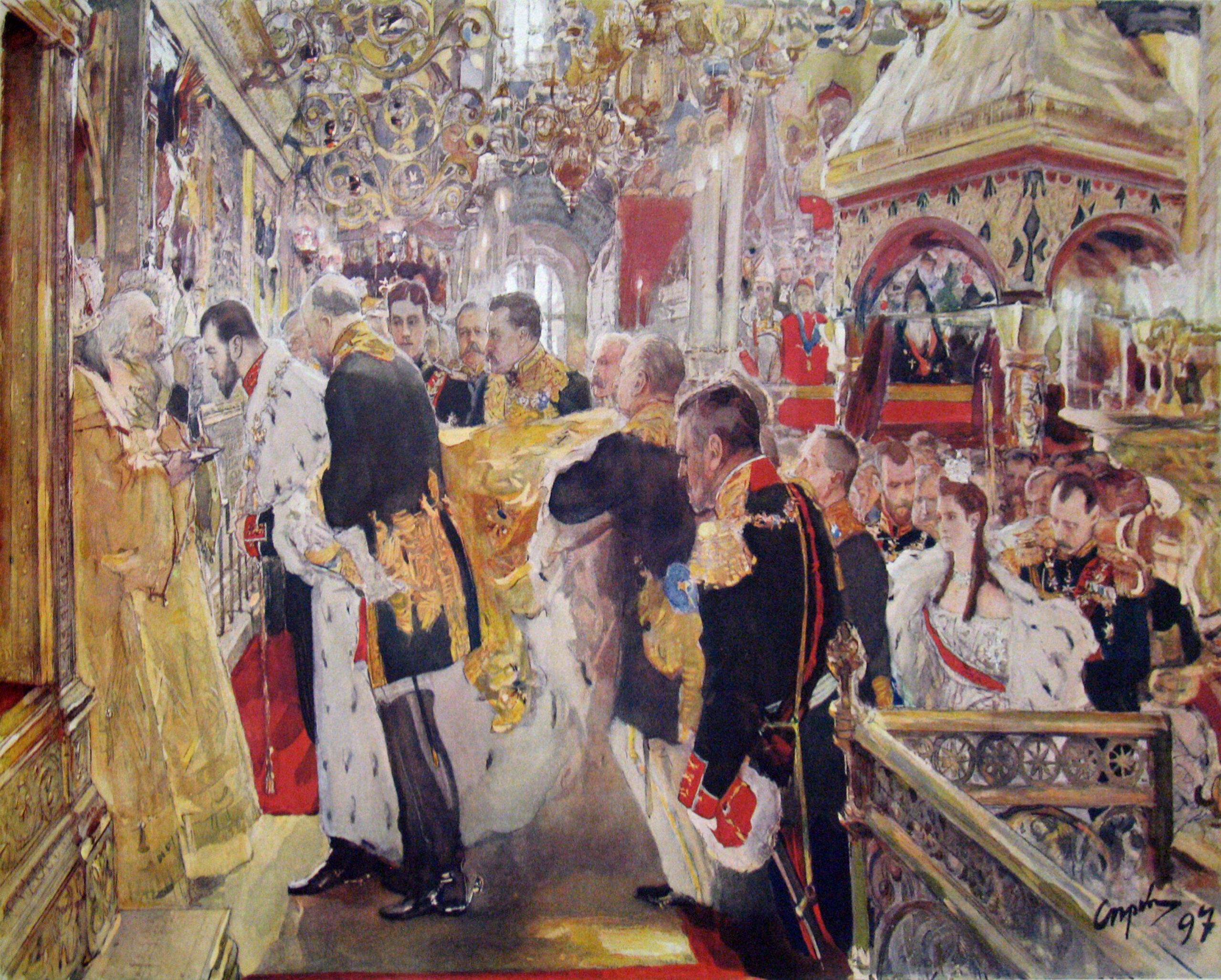
A master of the psychological portrait, Serov was extremely popular in elite circles. He made some portraits of Romanov family. Serov rose to fame after his paintings “The Girl with Peaches” (1887) and “The Girl in Sunlight” (1888) were shown to the public. His portraits are distinguished by his portrayal of the subject’s soul.
Nicolai Fechin (1881-1955)
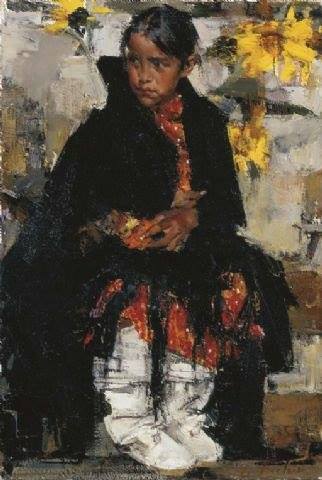
Fechin became a distinguished artist in two countries: his motherland Russia, and the USA where he lived for nearly 30 years. In America he was known for his portraits of native Indians and in Russia, and for portraying everyday life.
Today his paintings fetch a pretty penny at auctions, exceeding millions of dollars. Fechin’s work “Little Cowboy”, which was sold for 6.9 million pounds in 2010, made the artist one of the most expensive painters in Russia.
Vladimir Baranov-Rossine (1888–1944)
The artist kicked off his career by creating a number of impressionist works, but Baranov-Rossine later pursued orphism and even created so-called polytechnic sculptures composed of organic and inorganic materials. After graduating from the St. Petersburg Academy of Arts, the painter traveled to Paris and settled in a bohemian district with Marc Chagall and Amedeo Modigliani as his neighbors. His still life impressionist paintings are the most elegant ones.
Pyotr Konchalovsky (1876 – 1956)
A passionate fan of Paul Cezanne and an admirer of European culture, Konchalovsky searched for his calling in different art movements like impressionism, post-impressionism and cubism. He froze the beauty of nature in his still life paintings of flowers. Like Renoir, the painter believed that “pain passes, and beauty remains,” trying to imprint the positive side of life.
How Russian Impressionism developed
Unlike Impressionism in France and the USA, Russian Impressionism continued to develop throughout the 20th century. The original impressionists taught the next generation, who in turn taught later generations. There is now a wealth of contemporary Russian Impressionists who still paint plein air like the original impressionists, and with the same style of brushwork. However their paintings have developed to make more use of capturing light and color, and incorporating other techniques to develop a new style of artwork.
The contemporary Russian Impressionists
Here are a few artists who are well known in the current Russian Impressionism movement.
Bato Dugarzhapov (1966– )
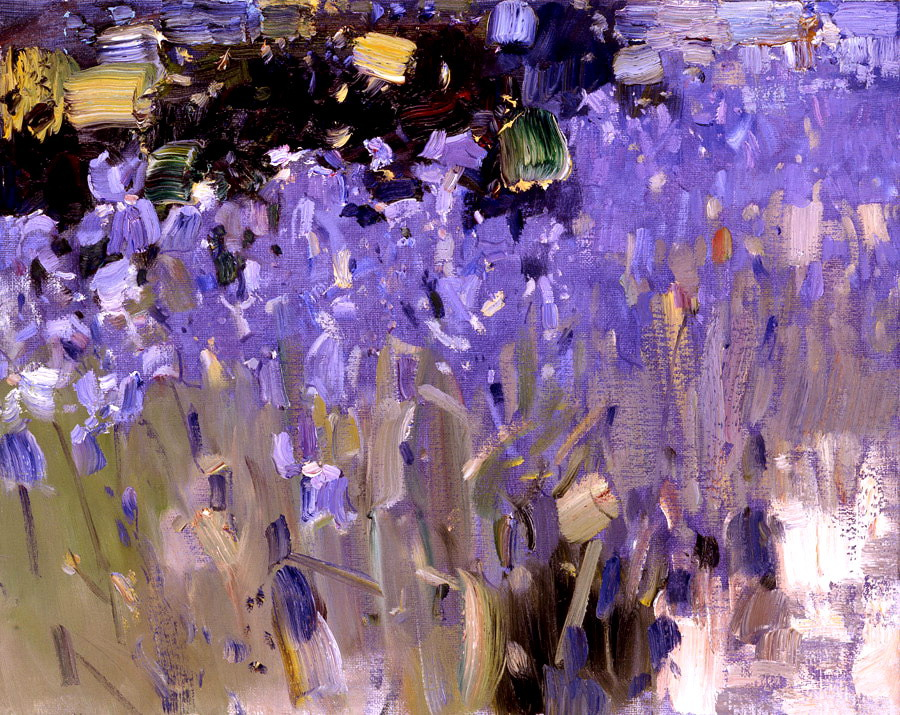
Bato Dugarzhapov was born in Duldurga in the Chita Region of Siberia. He studied at Moscow Art School and graduated from Surikov’s Moscow Art Institute. He is a member of the Moscow Union of Artists, and lives and works in Moscow.
A key strength in Dugarzhapov’s work is his excellent combination of both far music and near music. The compositions are always very strong, with an interesting arrangement of shapes, and beautiful color harmonies. He uses many types of contrast: contrast of detail, contrast of temperature, and contrast of thick and thin. The paintings are usually painted in middle values with a few dark accents, and sometimes in a high key to emphasize the feeling of strong sunlight.
He is one of the very few painters who can take a representational painting to the verge of abstraction and still make it feel real. Another painter who was able to achieve this was Feodor Zhakarov, but with not with quite the same degree of color harmony.
See: The Art of Bato Dugarzhapov
Denis Sarazhin (1984 – )
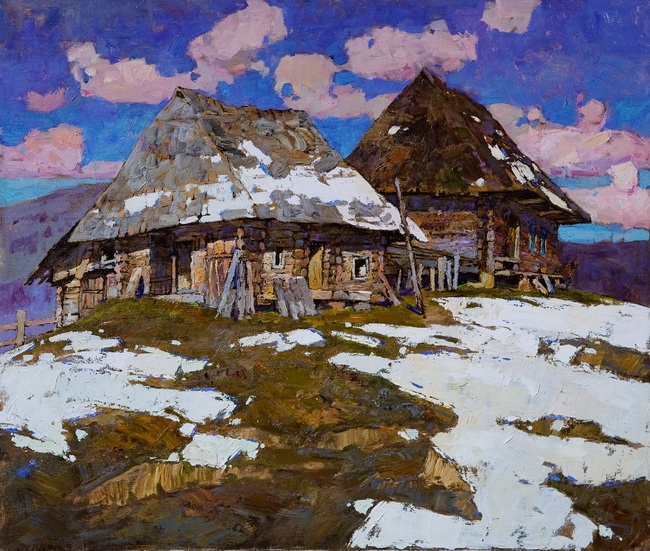
Sarazhin was born in Nikopol, Ukraine in 1982. He attended the Kharkov Art and Design Academy, graduating in 2008. Sarazhin was awarded with the 1st Degree Diploma Award for Excellence in Painting from the Ukrainian Art Academy. This prestigious national award is only given to an elite group of graduating students from all the nations top artistic institutions. Since 2007 he has been a member of Kharkov’s section of the association of Ukraine’s Artists’ Alliance.
Sarazhin’s work is characterized by a strong abstract design with beautiful color harmonies. Beautiful color has historically been a strength of the Ukrainian painters since the 20th century, and it is good to see this tradition being carried on in contemporary painters.
Ovanes Berbarian (1951 – )
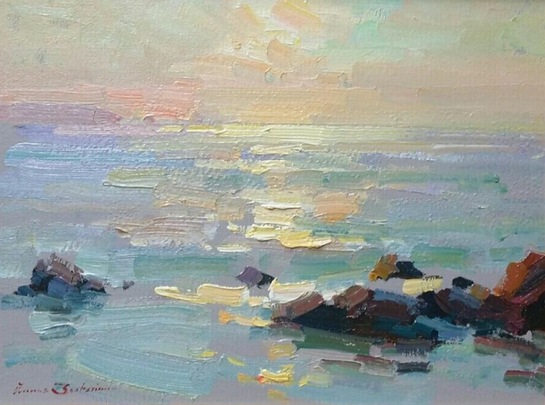
Berberian is a Russian Armenian, who received his primary art education under the guidance of his Russian father who was a member of the Armenian Artists’ Society, as well as a theatrical set designer and college art professor. When he moved to the USA in 1977 he studied under Sergei Bongart, who was born in Kiev in Ukraine and studied art in Kiev, Prague, Vienna and Munich, before emigrating to the United States.
Berberian’s deep understanding of hue, value and color relationships make him sought after not only by collectors, but by students who come from near and far for a chance to attend one of his workshops. He mostly paints plein air but does some of his larger pieces in the studio.
He states unequivocally that in painting the most important thing is color harmony. Berberian’s use of color, combined with his dynamic, painterly style, makes each landscape and still life come alive striking a chord deep within the viewer.
Veronika Lobareva
Veronika Lobareva is a wonderful contemporary Russian ne0-Impressionist with a remarkable sense of color and design. You can see more of her work in our Veronika Lobareva profile
See also: French Impressionism
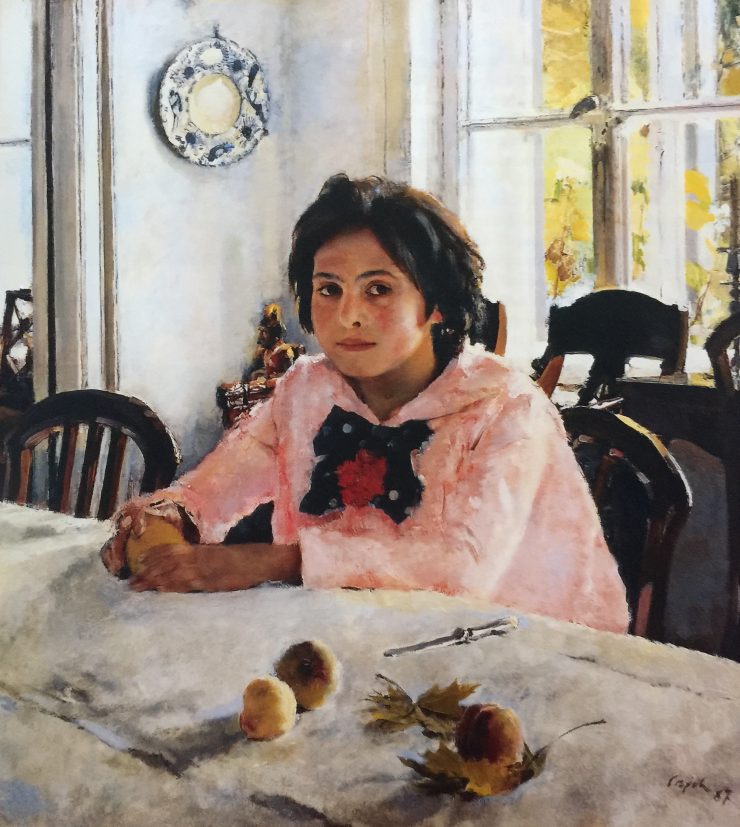
Gli impressionisti russi sono la mia passione, alcuni sanno emozionare più del dovuto innanzitutto per i soggetti scelti che magistralmente sanno riempire di luce e ombre che nell’insieme parlano della quotidianità. Complimenti alle scuole da cui provengono che sono riuscite a formare il loro innato talento
anch’io sono impassionato del loro lavoro.
Thank you, Cosmina Oltean, for this vista-opening article, a enticing introduction to ongoing! Russian and Ukrainian Impressionism and neo-Impressionism. I’m Australian, and we have a home grown version, more or less contemporary with the influential French. That’s called the Heidelberg School, after the district in Victoria, not the city in Germany.
I had the good fortune to spend some time in Caracas, Venezuela, in the late 1980s and was naively struck by the plain evidence that Venezuela too had its Impressionist phase. I could have been looking at Heidelberg School works.
What a lasting impression those First Impressionists made, evident in notes among the cacophony of myriad present day art and trying to be art anew, or not art at all, but treat me as if…. A ripper piece of introductory writing. Lots to follow up.
Thanks VAA, for putting this out to us.
Regards, Sandra H.